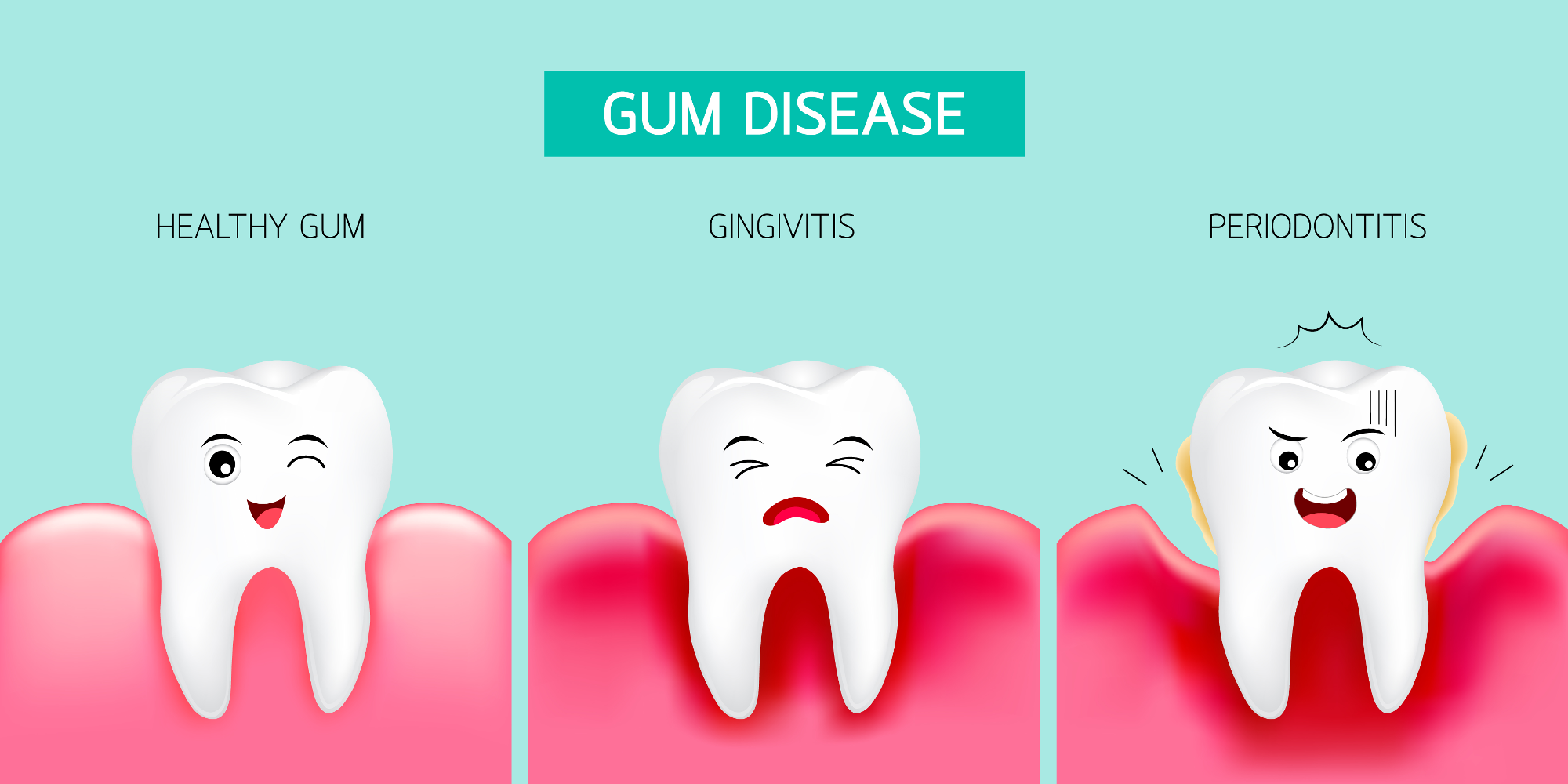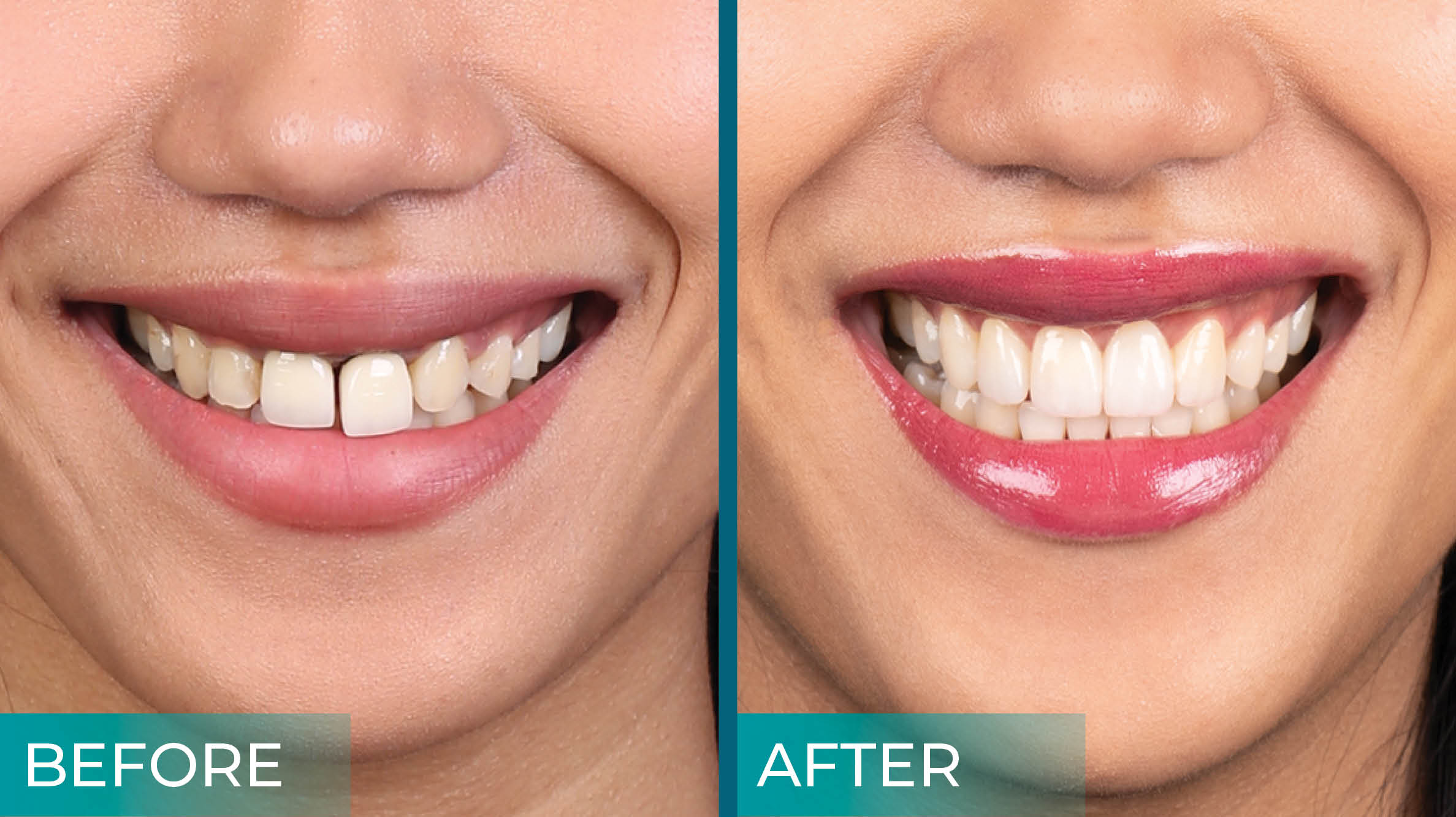
Gum Disease
There are three main types of gum disease: gingivitis, periodontitis and acute necrotising ulcerative gingivitis (ANUG).
Gum disease is very common – gingivitis, the early form affects more than half of adults worldwide. It can be treated by a dentist or hygienist and in the early stages the effects can be reversed.
Gingivitis
If you have gingivitis, your gums become irritated by plaque, which is a mixture of food, bacteria and bacterial waste products that can build up on your teeth. If you don’t clean plaque off your teeth regularly, it can get underneath you gum line, causing your gums to become red, swollen and they may bleed when you brush them.
This is the early stage of gum disease and if you remove the plaque, your gums will recover. But if you don’t clean the plaque off your teeth, the gingivitis may develop into a more serious type of gum disease called periodontitis.
Periodontitis
If you don’t get treatment for gingivitis, your gums may begin to pull away from your teeth, leaving small pockets. These pockets trap plaque that you can’t reach with a toothbrush. Over time, the plaque will harden to become tartar (calculus). Plaque and tartar build-up can cause further irritation, which may gradually spread to the bone structures around your teeth. As time goes on, the pockets can get deeper and more difficult to clean, and your gum and bone may shrink. This is called periodontitis.
If your gums shrink, they can expose some of the roots of your teeth, making them sensitive. And if you have bone loss, your teeth may become loose. If you don’t get treatment for a number of years, your teeth may fall out, or need to be taken out by a dentist.
Periodontitis can’t be completely cured; however, if you receive the appropriate treatment and make sure you floss and brush your teeth well, the progress of the disease can be stopped.
Acute Necrotising Ulcerative Gingivitis – The last stage of Gum Disease
Treatment Options for Gum Disease
If you go to the dentist early on and your treatment for gingivitis is quick and proper, the symptoms of gingivitis can be successfully reversed. The treatment process usually involves care by a dentist and follow-up procedures carried out by the patient at home.
The care you receive from the dentist can include:
- Plaque and tartar removal (also known as scaling).
- Explanation of good oral hygiene and how to effectively brush your teeth.
- Follow-up visits with further cleaning if necessary.
- Fixing your teeth so that oral hygiene can be done more effectively.
Care you need to do at home can include:
- Brushing your teeth at least twice a day. Keep in mind that electric toothbrushes can be more effective at getting a good clean on your teeth.
- Flossing your teeth at least once a day.
- Regularly rinsing your mouth with an antiseptic mouthwash. Your dentist can recommend a good one.
With good dental hygiene and routine visits to your dentist, you should be able to steer clear of gingivitis. Finding the time to visit the dentist is just as important as regularly visiting your doctor. With early detection of any gum disease, it can save you time, money, and a lot of pain later.





